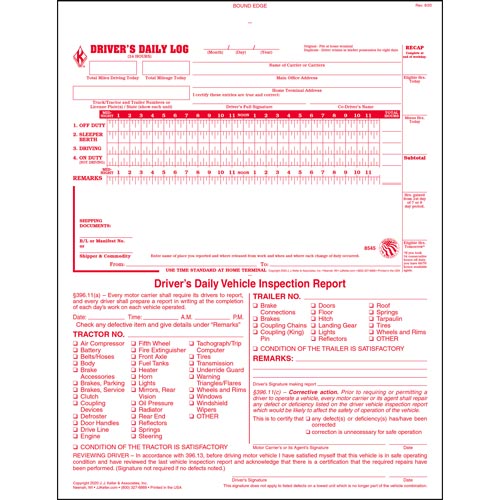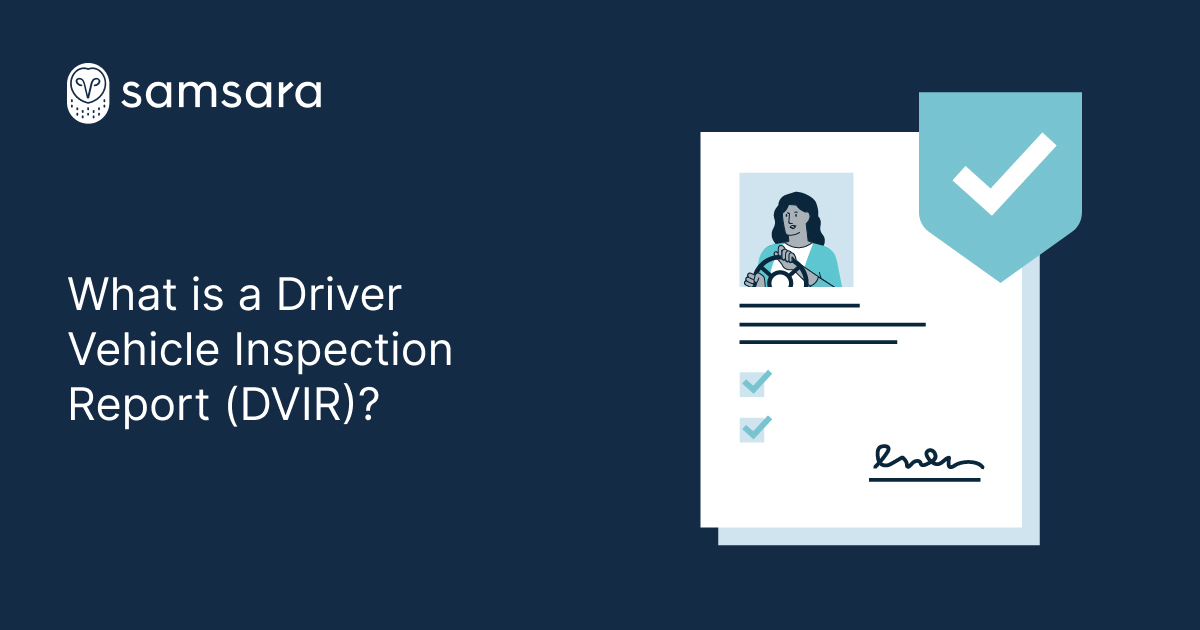
You are required to complete and sign a DVIR whenever a defect or deficiency is discovered or reported. DVIRs are essential records that confirm that drivers have inspected their commercial motor vehicles before and after every trip.
It is crucial for staying DOT compliant and ensuring vehicle safety, which can prevent incidents, fines, and protect drivers. Completing a DVIR daily for each vehicle is a best practice that aids in the early identification of potential safety issues, ultimately extending vehicle lifespan and safeguarding both assets and personnel.
This guide will delve into the significance of DVIRs, their contents, and why they are crucial for fleet management and road safety.

Credit: www.jjkeller.com
Navigate As You Want: [show]
What Is A Dvir?
When it comes to driving commercial motor vehicles (CMVs), completing and signing a Driver Vehicle Inspection Report (DVIR) is essential. A DVIR is a formal record confirming that a driver has inspected their CMV before and after use. It is mandatory to complete a DVIR for each vehicle every day of its operation, including pre-trip and post-trip inspections. The purpose of DVIR is to identify potential safety issues and vehicle defects, safeguarding against incidents and costly fines. In line with FMCSA regulations, it’s crucial to ensure compliance with DVIR requirements and maintain the safety and integrity of commercial vehicles.
When Is A Dvir Required?
A DVIR, or driver vehicle inspection report, must be completed and signed when a defect or deficiency is discovered or reported by the driver. This formal record confirms that a commercial motor vehicle has been inspected before and after being taken on the road.
It is important to complete a DVIR daily for each vehicle to identify and address potential safety issues.
| In instances where a defect or deficiency is discovered or reported during the day’s work, drivers of property-carrying CMVs are required to complete and sign a DVIR. |
| Federal regulations mandate the completion of a DVIR for each vehicle daily, encompassing pre-trip and post-trip inspections. |
| The purpose of a DVIR is to enhance safety by identifying potential issues before they escalate, ensuring DOT compliance, and safeguarding drivers and assets. |
| While not obligatory, retaining non-defect DVIRs electronically is advisable to streamline processes and reduce paperwork burdens. |
How To Complete A Dvir
Completing and signing a DVIR is required when a defect or deficiency is discovered or reported. The DVIR is filled out during pre-trip and post-trip inspections.
Items to include in a DVIR are any unsafe or missing equipment on the vehicle that needs to be fixed promptly to ensure safety and compliance.

Credit: www.samsara.com
Benefits Of Completing Dvir
Completing and signing a DVIR is required after pre-trip and post-trip inspections. It is essential to identify safety issues and potential vehicle defects to ensure roadworthiness. By complying with DVIR regulations, you can avoid fines and maintain DOT compliance. Moreover, completing a DVIR can contribute to extending the lifespan of your vehicles, protecting your drivers and assets. It’s crucial to understand the significance of completing and signing DVIRs to ensure safety and regulatory adherence.
Dvir Rules And Regulations
After discovering or being informed of any defects or deficiencies in a commercial motor vehicle (CMV) during the day’s work, drivers are required to complete and sign a Driver Vehicle Inspection Report (DVIR). This ensures compliance with regulations and aids in identifying potential safety issues before incidents occur.
A driver of a property-carrying CMV must prepare a Driver Vehicle Inspection Report (DVIR) at the completion of each day’s work only if a defect or deficiency has been discovered by or reported to the driver during that day. The Federal Motor Carrier Safety Administration (FMCSA) has specific regulations in place regarding the completion and signing of DVIRs. It is important for drivers to complete DVIRs to identify potential safety issues and vehicle defects before they lead to incidents. This not only saves drivers from costly fines but also extends the life of vehicles and protects the most important asset, which is the drivers themselves. While not required, it is still best practice to complete and retain non-defect DVIRs electronically to move away from paperwork and streamline processes.
Credit: intellishift.com
Frequently Asked Questions On When Are You Required To Complete And Sign A Dvir
During Which Inspection Is A Dvir Filled Out?
A DVIR is filled out whenever a defect or deficiency is discovered or reported during the inspection.
What Is The Fmcsa Dvir Final Rule?
The FMCSA DVIR final rule reduces paperwork burden without compromising safety. It’s still best practice to complete and retain non-defect DVIRs electronically for compliance and safety.
Why Is It Important To Complete The Dvir?
Completing the DVIR is important to identify safety issues and vehicle defects before they lead to incidents, helping you stay DOT compliant, avoid fines, and protect your drivers and vehicles. It is best practice to complete and retain non-defect DVIRs electronically as it can extend the life of your vehicles.
What Is A Dvir?
A DVIR is a Driver Vehicle Inspection Report, which is a document filled out by truck or bus drivers at the end of each day to report any unsafe or missing equipment on the vehicle. The purpose of a DVIR is to identify potential safety issues and vehicle defects before they lead to incidents, ensuring DOT compliance and protecting drivers and assets.
Conclusion
Completing and signing a Driver Vehicle Inspection Report (DVIR) is essential for ensuring the safety and compliance of commercial motor vehicles. It is necessary to conduct pre-trip and post-trip inspections and document any defects or deficiencies to prevent issues on the road.
This practice helps in maintaining vehicle safety, avoiding fines, and protecting drivers.





